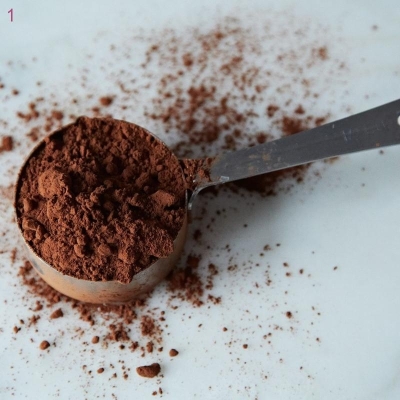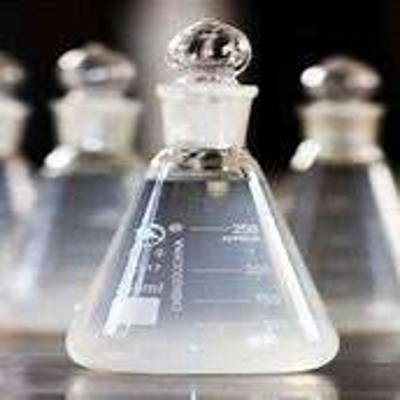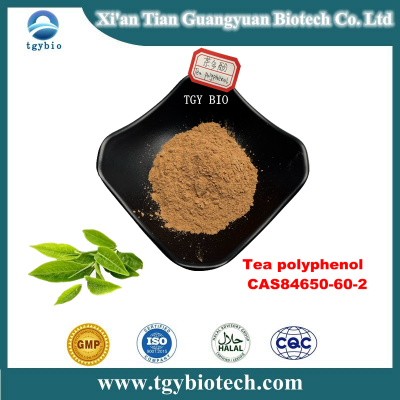Pigment pigment: blooming and charming
-
Last Update: 2010-07-24
-
Source: Internet
-
Author: User
Search more information of high quality chemicals, good prices and reliable suppliers, visit
www.echemi.com
Foreword: because of the color, our world is not so monotonous In the world of flowers and flowers, the so-called "color, fragrance and taste" in men's and women's mouths and "color" play the first role, which has become the primary factor in Chinese diet concept Indeed, as a normal person, the perception of things, first of all, is through vision, and among the many factors that can have an impact on vision, it is not "color" Today, food partners will talk about "color" with you Pigment in food, also known as colorant Recently, with the introduction of the European Union's regulations on warning labels for foods and drinks containing artificial food coloring, people in China are also concerned about this First of all, let's start with the pigment itself GB 2760-2007 color control agent is defined as the substance that can give color to food and improve the color of food The industrial colorant is generally called "dyestuff", of course, this is the customary appellation of Chinese people Food pigment: food pigment is often used in food for different reasons to add or preserve colors, such as making up for lost colors in food processing, correcting natural color differences, improving natural pigments, and adding attractive colors to food In other words, food coloring makes food more attractive If you don't have food coloring, you may find that lemon combs are not yellow, strawberry ice cream is not pink, and candy is not colorful Some food manufacturers will choose artificial colors instead of natural colors because the former is more stable in different environments and has lower cost Edible pigments are divided into natural pigments and synthetic pigments Natural pigments are mainly extracted from plant tissues, including some pigments from animals and microorganisms Synthetic pigment mainly refers to the organic pigment produced by the artificial synthesis method The edible synthetic pigments allowed to be used in China include amaranth, carmine, red moss, new red, tempting red, lemon yellow, sunset yellow, bright blue, indigo, etc According to statistics, in GB2760, there are more than 50 kinds of pigments that can be used, and in the national standard, there are clear provisions on the scope of application and the limit of use Download of GB2760, please click the knowledge and information about edible pigments, including: types and application of colorant pigments; application of pigments: extraction process of edible natural pigments how to use food synthesis pigment gardenia yellow pigment usage of corn yellow pigment extraction of amaranth red pigment in functional vegetables The application of natural pigment lutein in the production of Broilers and aquatic products Basic knowledge of pigment and lake (FDA related) [share] Application of confectionery pigment standard (table of regulations for confectionery pigment use in various countries) and natural pigment in food industry [share] American pigment standard [notice] food color matching (coloring) technology warning color: illegal vendors use peach red pigment to make up for peanuts, red skin peanuts are dyed bayberry on the market How to know if watermelon has been pigmented? When buying pigmented black glutinous rice feed carefully, we found out that the colorant "jialisuhuang" was not clearly defined in China Color Escort - related: new varieties of laws and regulations: announcement of the Ministry of health of the people's Republic of China (No 17, 2008) (food additives and food processing aids) - lycopene scope expanded: Announcement No 3 of 2007 of the Ministry of health of the people's Republic of China (expansion of food additives) Announcement No 4 of 2007 of the Ministry of health of the people's Republic of China (expansion of food additives) Announcement No 26 of 2008 of the Ministry of health of the people's Republic of China (food additives and food processing aids) Announcement of the Ministry of health on Approving the expansion of the use scope and amount of food additives and nutritional enhancers (No 19, 2009) recent news: · 2010-07-27 16:04 [small topic] assessment process of EU azo food pigments · 2010-07-27 08:30 EU food safety administration completed the re assessment of all azo food pigments and reduced the ADI value of amaranth · 2010-07-23 09:13 EU: Food and beverage containing artificial edible pigment should be warned 2010-07-16 08:07 Royal Mobil "self exposure" added illegal pigment 2010-04-26 08:50 EU released safety assessment results of three kinds of edible pigment 2010-03-22 10:06 U.S revised pigment additive regulations 2010-03-08 15:57 synthetic pigment can cause disease and alert "color ”Food becomes the killer of children's health · 2010-02-02 14:57 British Food Standards Agency updated the list of enterprises without six pigments · 2010-01-28 14:58 EU revised the exposure assessment results of Lycopene as food pigment · 2009-12-02 13:33 British Food Standards Agency updated the list of enterprises without six pigments · 2009-11-16 09:20 EU food safety agency revised the suggestions on the safe use of six kinds of food pigments 2009-11-10 13:17 South Korea banned the circulation and sale of food with banned pigments 2009-07-07 16:47 British Food Standards Agency updated the list of enterprises without six kinds of pigments 2009-02-05 10:56 EU companies voluntarily banned pigments related to ADHD 2009-01-15 10:39 A batch of imported chocolate was returned after illegal addition of quinoline yellow pigment 2008-11-27 09:11 new management measures were taken for 6 kinds of pigments in the UK 2008-09-09 10:57 Australia vigorously discussed the proposal to ban 6 kinds of artificial food pigments 2008-06-16 08:31 us recently called for the prohibition of 8 kinds of artificial pigments for food processing 2008-04-25 08:43 UK proposed ban 6 2008-04-14 09:26 British Food Standards Agency suggested less use of pigments in food 2008-02-25 09:33 us proposed to modify the pigment regulations 2007-12-07 09:35 Hong Kong, China issued the draft amendment to the pigment substances in the food regulations 2007-09-27 09:09 EU issued a warning to lollipops produced in China 2007-07-14 10:06 EU issued a warning on Chinese jam marshmallows 2007-07-05 08:20 Beijing stopped selling five kinds of food, adding sunset yellow to damage kidney and liver 2007-06-20 10:59 South Korea will ban the import of sauce with red pigment from China 2007-05-30 09:01 UK: food additives harm children
This article is an English version of an article which is originally in the Chinese language on echemi.com and is provided for information purposes only.
This website makes no representation or warranty of any kind, either expressed or implied, as to the accuracy, completeness ownership or reliability of
the article or any translations thereof. If you have any concerns or complaints relating to the article, please send an email, providing a detailed
description of the concern or complaint, to
service@echemi.com. A staff member will contact you within 5 working days. Once verified, infringing content
will be removed immediately.







